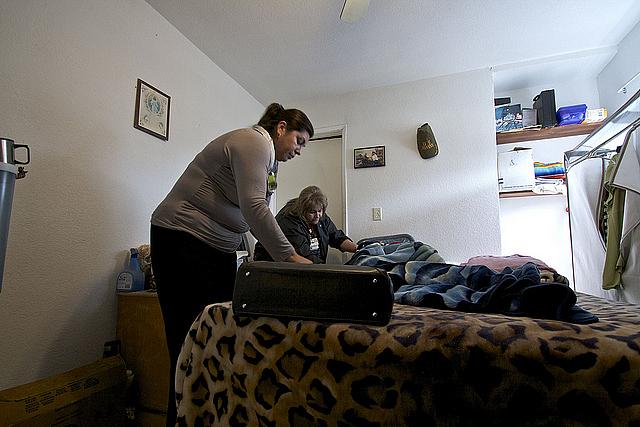When Isolation Hinders Health: Reporting in Rural California

When I left for a week of reporting in rural California in late February, I didn't know I would come back with two stories about the devastating health consequences of isolation.
I'm not just talking about the geographic isolation one finds in a remote area. From the hilly evergreen landscape of eastern Shasta County, to the agricultural flatlands of Tulare County in the South Central Valley, I witnessed how isolation can leave people in the dark about keeping healthy, lead to emotional despair, and pose real barriers to quality of life.
Reporting in Tulare County
Reporting in Tulare County was a sobering experience. While I was in Visalia, I followed Kaweah Delta Hospital outreach specialist Wendy Martinez. In just one day, she dealt with a patient left severely disabled from a stroke after a methamphetamine overdose, a Hepatitis C patient waiting for a liver transplant, a diabetic man who stopped eating in a bout of depression, and a man with severe medical needs after his prison-release.
All these clients had one thing in common- they lacked the knowledge to navigate the health care system. Martinez bridged that gap. She also helped meet basic needs such as reading mail, comforting a crying mother, and driving across California to see an organ transplant facility.
I saw terribly sick patients in the hospital, but one of the most powerful moments of my visit in Tulare was when Martinez told me that one of her middle-aged Caucasian clients was illiterate. I've only met a couple of people who can't read or write. But I learned that the rate of people lacking basic literacy skills in Tulare County is one of the highest in California.
I was also taken aback by overwhelming environmental conditions I felt with my own eyes and lungs. When I stepped out of my car on the outskirts of Visalia, the smell of cow dung was overwhelming. The smell even pervaded the middle of the town. The town is noted as having some of the worst air quality in the country , and hospital workers told me asthma is a common sight when visiting their high-needs clients. Tulare County has one of the highest adult obesity rates in the state, at 31.1%, according to the Centers for Disease Control . That problem was glaringly apparent to me.
Illiteracy, obesity and asthma are certainly not unique to rural areas. But they are everyday problems for these emergency room workers and their clients.
Reporting in Shasta County
Isolation looks different in Shasta County. Near the tiny community of Round Mountain, roadside houses were few and far between. The county has one of the highest suicide and drug use death rates in the state.
As I reported in the documentary, Hill Country Health and Wellness Center is working to combat the ill effects of isolation by creating regular social activities for mental health patients. The center's director said this community outreach effort has literally saved lives, by creating connections between local people who are isolated not only by their illness, but also by their remote location. The center also provides transportation for these patients to attend doctor's visits, something that she says is crucial to their wellbeing.
The social isolation - and logistical transportation challenges - of being low income in a rural area also takes toll on young people in the area. Clinic workers said the distance between Round Mountain and surrounding towns limits the opportunities for youth to bring themselves out of poverty and into situations with better self care options. Hill Country provided a local solution. There's a teen center that offers safe socializing, educational counseling and community involvement.
Getting Out Into the California Where Tourists Don't Go
In my ten years of reporting, including time freelancing from several Latin American countries - from war-torn Colombia, to Cuba, to poverty-stricken southern Argentina - I have rarely seen the level of miserable conditions that I saw in Tulare County.
I recommend that every California-based journalist take the opportunity to report from the remote areas of our state, where, by some measures, quality of life may be compromised at a level we only perceive possible in developing nations.
The upside of my sobering experience in low-income rural regions of California, is that I was able to focus my reporting on projects working to alleviate isolation. In doing so, these programs may be saving peoples' lives.
